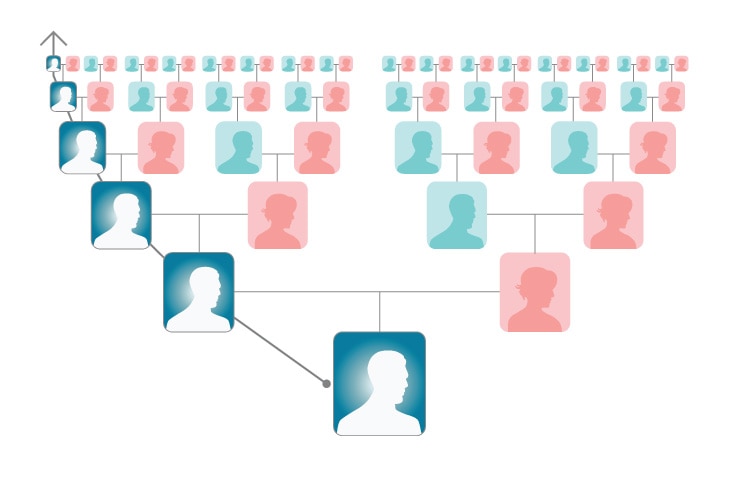What is Y-DNA?
Y-DNA refers to the DNA found on one of the sex chromosomes, the Y-chromosome. (The other sex chromosome is the X chromosome.) Although there's no proof that men are actually from Mars and women from Venus, like the popular, eponymous book from the 1990s, they do typically differ in one big way: most biological males have a Y chromosome that women lack.
 Sex chromosomes usually come in pairs and help determine if you're a biological male or a biological female. In general, men typically have one Y and one X chromosome, while most biological females have two Xs. There are also intersex people who are born with sex chromosome combinations and sex characteristics other than XY male and XX female.
Sex chromosomes usually come in pairs and help determine if you're a biological male or a biological female. In general, men typically have one Y and one X chromosome, while most biological females have two Xs. There are also intersex people who are born with sex chromosome combinations and sex characteristics other than XY male and XX female.
Most everyone gets one X chromosome from their biological mother. Your biological father usually contributes either a Y chromosome (which would make you a biological male) or an X chromosome (which would make you a biological female).
What Are Y-DNA Haplogroups?
A haplogroup is really just a stretch of DNA commonly found in certain populations. A Y-DNA haplogroup, then, is a stretch of the Y chromosome that you share with male relatives along your paternal line. So if you have a Y, you got it from your dad, who got it from his dad and so on.
It turns out that because the Y chromosome, unlike the other human chromosomes, does not have a nearly identical partner, Y-DNA can be traced far back into the past. In fact, every living male can trace their Y-DNA back to a single man, Y-Adam (as he is known).
Y-DNA haplogroups are usually determined by looking at single nucleotide polymorphisms (SNPs). A SNP (pronounced “snip”) is a variation of one DNA building block, or nucleotide, at a single position in the DNA sequence. For example, at a single position on the Y chromosome most people have the nucleotide thymine (T) but a few people have an adenine (A) instead.
Haplogroups can also be determined by looking at short tandem repeats (STRs). An STR is a short sequence of DNA that repeats itself, such as GAT repeating (GATGATGAT). Both SNPs and STRs help group together people who have the same differences.
What Is Y-DNA Testing?
Y-DNA testing is a way to trace your ancestry back into the distant past. You can see back thousands and even tens of thousands of years ago. But the trick is that it only traces back the paternal line. In other words, you can only see your dad (and his brothers), your dad's dad (and his brothers), and so on.
Because most women don't have a Y chromosome, taking a Y-DNA test themselves may not be very useful. However, if a woman has a living biological brother or father, then they can be tested, so she can learn more about the paternal side of her ancestry.
What Are the Main Alternatives to Testing Y Chromosome DNA?
The three main types of DNA tests are Y-DNA, mitochondrial, and autosomal. A Y-DNA test, as mentioned, only looks at the paternal line. A mitochondrial DNA(mtDNA) test only looks at the maternal line of ancestry. It examines mtDNA, which only biological females can pass on to the next generation.
Perhaps, given its name, an autosomal test looks at the DNA of your autosomes. Autosomes are the 22 numbered chromosome pairs in your cells, that together with the pair of sex chromosomes make up the 23 pairs of chromosomes typically found in humans.
You inherit autosomal DNA from both of your biological parents. This type of test is best for helping you find recent relatives on both sides of your family tree.